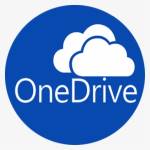5 Ways to Send Large Files
Are you tired of sending emails with multiple attachments? Sending large files over the internet can be a pain, but it doesn’t have to be if you know how to take advantage of modern cloud storage and online collaboration tools. In fact, there are several ways to send large files and videos over the internet that don’t require ever having to attach them or copy and paste them into an email or message. Here are five ways to send large files over the internet that you should try out today.

Use Gmail
 If you’re emailing a large file or video, use Gmail. Gmail is designed for sending large files, so you won’t have trouble sending 1GB of photos. And it all happens in your inbox, so there’s no hassle looking for email addresses to send it to. Just attach your document (or link to your Google Drive folder), and hit send and archive. Those who are sent an attachment will be able to download it from their Inbox without opening a new message—the message comes with a Dropbox-like download icon that opens up automatically after hitting view attachment. That said, it takes time for larger files to transfer and open—be patient if you don’t get right away what you were expecting. If Gmail isn’t working for you, try these alternatives below:
If you’re emailing a large file or video, use Gmail. Gmail is designed for sending large files, so you won’t have trouble sending 1GB of photos. And it all happens in your inbox, so there’s no hassle looking for email addresses to send it to. Just attach your document (or link to your Google Drive folder), and hit send and archive. Those who are sent an attachment will be able to download it from their Inbox without opening a new message—the message comes with a Dropbox-like download icon that opens up automatically after hitting view attachment. That said, it takes time for larger files to transfer and open—be patient if you don’t get right away what you were expecting. If Gmail isn’t working for you, try these alternatives below:
Use Dropbox
 Store files on cloud-based storage and make them accessible from any device with an internet connection. This is great for sending larger files over email, but remember that you need an Internet connection for recipients to download your file. If you don’t have a solid 4G connection, for example, it may be better to send a smaller file and attach or link to it within your message rather than include it in an attachment. You can also share Dropbox folders via public links; if you want to share with someone who doesn’t use Dropbox, though, they will still need a (free) account. They can log into their own account, download your folder and make changes just as you do. Dropbox offers different plans based on how much space you need (from 2GB of free space up to unlimited). These limits could hinder your ability to transfer large files that exceed upload limits, so be sure to estimate how many photos, videos or other large files you might end up sharing before selecting a plan.
Store files on cloud-based storage and make them accessible from any device with an internet connection. This is great for sending larger files over email, but remember that you need an Internet connection for recipients to download your file. If you don’t have a solid 4G connection, for example, it may be better to send a smaller file and attach or link to it within your message rather than include it in an attachment. You can also share Dropbox folders via public links; if you want to share with someone who doesn’t use Dropbox, though, they will still need a (free) account. They can log into their own account, download your folder and make changes just as you do. Dropbox offers different plans based on how much space you need (from 2GB of free space up to unlimited). These limits could hinder your ability to transfer large files that exceed upload limits, so be sure to estimate how many photos, videos or other large files you might end up sharing before selecting a plan.
Use iCloud Drive
 There’s a common saying in business: if you can measure it, you can manage it. The same applies to computer systems. If a network administrator knows how much data is being transferred through a server or how many employees log into which servers at what times of day, for example, then that knowledge helps them make informed decisions about upgrades or redundancies—and keep costs down. In other words, if your company handles sensitive customer information, it makes sense to keep an eye on things. For large companies with complicated IT setups, even frequent internal audits may not be enough to detect every threat. For these companies, third-party audits and reviews by professionals provide a necessary assessment tool. But regardless of size or needs, all businesses benefit from regular audits and reviews by skilled professionals who know their way around systems–because it saves money in maintenance costs, security breaches and downtime losses. Don’t Just Look – Fix It: Good thing audits aren’t just limited to finding vulnerabilities. As part of its review process, auditors should offer suggestions for improving system setup and performance. Often they will recommend preventive measures like moving certain software installations offsite so they aren’t affected by local disasters such as floods or power outages. They might also recommend making important security changes to Managed Services such as stronger firewalls or dual passwords before trouble strikes.
There’s a common saying in business: if you can measure it, you can manage it. The same applies to computer systems. If a network administrator knows how much data is being transferred through a server or how many employees log into which servers at what times of day, for example, then that knowledge helps them make informed decisions about upgrades or redundancies—and keep costs down. In other words, if your company handles sensitive customer information, it makes sense to keep an eye on things. For large companies with complicated IT setups, even frequent internal audits may not be enough to detect every threat. For these companies, third-party audits and reviews by professionals provide a necessary assessment tool. But regardless of size or needs, all businesses benefit from regular audits and reviews by skilled professionals who know their way around systems–because it saves money in maintenance costs, security breaches and downtime losses. Don’t Just Look – Fix It: Good thing audits aren’t just limited to finding vulnerabilities. As part of its review process, auditors should offer suggestions for improving system setup and performance. Often they will recommend preventive measures like moving certain software installations offsite so they aren’t affected by local disasters such as floods or power outages. They might also recommend making important security changes to Managed Services such as stronger firewalls or dual passwords before trouble strikes.
Use OneDrive
 If you’re on a PC, Microsoft’s cloud-based storage solution makes it easy to send large files between computers. Once you install OneDrive and sign in with your Windows username, you can create a shared folder that other users have access to. Just place any files or folders inside of it, right-click on them, and choose the Share a OneDrive link. The recipient will then be able to access those files via a web browser; there’s no need for them to download anything before opening/editing/using your file(s). This works even if they don’t use OneDrive at all—in fact, by sharing a public link to your file (instead of sending a private one), you allow anyone (including search engines) to access it without logging into their own account first. These won’t disappear after 30 days, either; we tested our sample file several months later and found that it was still online, accessible from anywhere in the world through OneDrive’s website interface. What’s more, whatever edits are made to these documents are saved automatically in real time on each user’s hard drive–it doesn’t matter which computer is used. As long as each party has installed OneDrive and granted access to your shared folder (which also works across multiple devices!), you’re good to go!
If you’re on a PC, Microsoft’s cloud-based storage solution makes it easy to send large files between computers. Once you install OneDrive and sign in with your Windows username, you can create a shared folder that other users have access to. Just place any files or folders inside of it, right-click on them, and choose the Share a OneDrive link. The recipient will then be able to access those files via a web browser; there’s no need for them to download anything before opening/editing/using your file(s). This works even if they don’t use OneDrive at all—in fact, by sharing a public link to your file (instead of sending a private one), you allow anyone (including search engines) to access it without logging into their own account first. These won’t disappear after 30 days, either; we tested our sample file several months later and found that it was still online, accessible from anywhere in the world through OneDrive’s website interface. What’s more, whatever edits are made to these documents are saved automatically in real time on each user’s hard drive–it doesn’t matter which computer is used. As long as each party has installed OneDrive and granted access to your shared folder (which also works across multiple devices!), you’re good to go!
Use Google Drive
 Google’s free cloud storage program allows you to send files up to 15 GB in size, and it offers a couple of other benefits that make it worth using. With Google Drive, you can store virtually any type of file on your hard drive—documents, photos, videos—and access them from any computer with an Internet connection. It also enables you to share documents with colleagues or friends, either publicly or privately; moreover, if one person makes changes to a document in their browser, those changes will be reflected when anyone else views that document through Google Drive. Most important of all for people who work remotely: It saves money by enabling businesses to avoid sending large files over costly data services such as email. This feature alone can save companies thousands of dollars every year. Simply click download (rather than save) and choose Google Drive–Optimized HTML rather than DOCX or PDF (which only works if you have Microsoft Word 2007 or later). A similar service is offered by Dropbox, which gives users 2 GB for free. Businesses can upgrade to Pro accounts that offer more space and many advanced features; pricing starts at $8.40ex per month per user, though 50 per cent discounts are available for non-profits.
Google’s free cloud storage program allows you to send files up to 15 GB in size, and it offers a couple of other benefits that make it worth using. With Google Drive, you can store virtually any type of file on your hard drive—documents, photos, videos—and access them from any computer with an Internet connection. It also enables you to share documents with colleagues or friends, either publicly or privately; moreover, if one person makes changes to a document in their browser, those changes will be reflected when anyone else views that document through Google Drive. Most important of all for people who work remotely: It saves money by enabling businesses to avoid sending large files over costly data services such as email. This feature alone can save companies thousands of dollars every year. Simply click download (rather than save) and choose Google Drive–Optimized HTML rather than DOCX or PDF (which only works if you have Microsoft Word 2007 or later). A similar service is offered by Dropbox, which gives users 2 GB for free. Businesses can upgrade to Pro accounts that offer more space and many advanced features; pricing starts at $8.40ex per month per user, though 50 per cent discounts are available for non-profits.
Contact us to get started!







